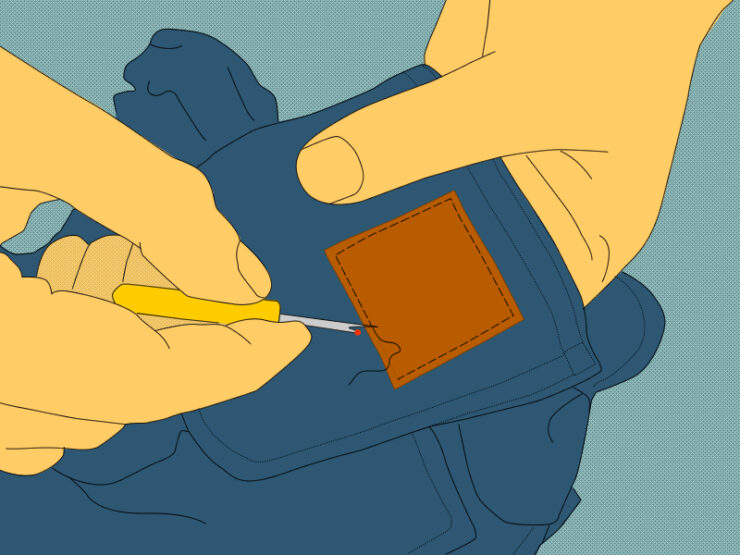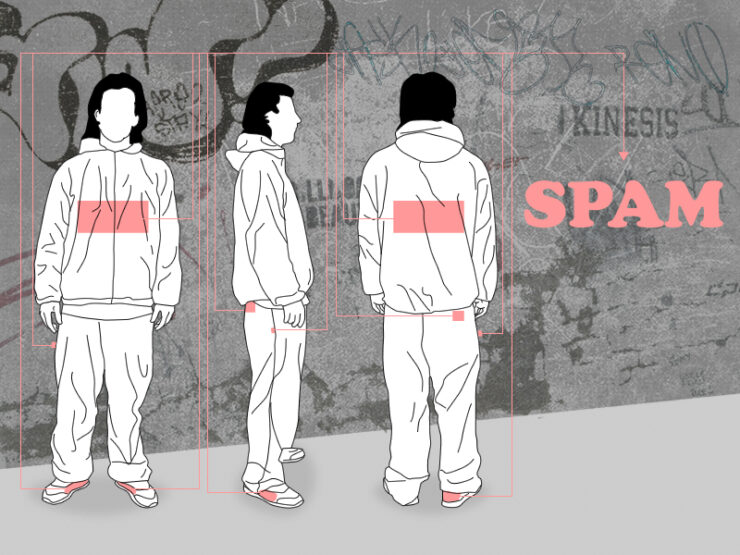Debranding
Renting pieces of public space is a lucrative business for many: municipalities, “outdoor communication” companies, and brands. A bar terrace here, multicolored parking zones everywhere, stations for the new “public” bike rental service, advertising fences, Mupis, banners covering buildings selling whatever… any excuse is good to benefit from public space.
These companies sell these products like this:
- Strategic locations.
- Excellent presentation quality.
- Maintenance and inspection of all supports.
- 24 hours of impact (illuminated supports).
- 100% frontal support vision (perpendicular to traffic).
Therefore, an advertising fence is charged for being a support located in public space, highly visible, and consisting of the aforementioned features. Price differences vary depending on the quality of the fence (size, location, brightness, etc.) and the quantity of contracted product.
But, are fences the only advertising support we encounter around here? Obviously, no. When we buy a piece of clothing that meets our needs, we usually accept that its brand is in a visible place. Even some people acquire pieces based on the brand’s visibility.
This practice reminds us of the walking billboard, an advertising technique where a person carries advertising messages on their body.

deranding
The mission of the walking billboard is to walk around with their advertising messages, thus distributing promotional memes. Its greatest utility is obtained by moving through habitual social spaces: work and leisure. Previously, they were financially remunerated. Nowadays, there are people who pay to wear them on their clothes. Once again, marketing 2.0 developed by users.
This effect of free advertising occurs in all products that will be used in public spaces, such as laptops, vehicles, school backpacks, etc.
To avoid giving free advertising to brands, we propose 2 solutions:
Solution nº 1: Debranding
- Do not buy products that, even if they could satisfy our needs, also try to use us as walking billboards.
- Buy products that do not display their brand.
- Buy products that, even with their visible brand, can be easily covered or removed:
Debranding is a term with which we intend to coin an attitude: we may succumb to the charms that a brand may offer, but in no way will we give them free advertising. By eliminating or covering the brand, we turn their product into generic to carry it according to our anti-advertising principles.
To remove sewn and embroidered brands from clothes and accessories, we need:
Cutter, scissors, or any cutting and pointed tool.

With patience, remove all visible brands from your clothing and accessories by unraveling them.

To cover printed brands or those that cannot be removed with the previous method, we have various options:
SOLUTION nº2: PERSONAL BILLBOARD
As we have seen, a person situated in public space can offer similar, if not better, benefits.
Therefore, billboards and people would be comparable as a valid outdoor support for advertising placement. What about the prices? If brands have to pay to expose themselves in public space on static supports, why shouldn’t they do so on dynamic supports?
The prices of billboards in public space are as follows:
| MUPI (illuminated) | 0’079 € per day per cm2* |
| VALLA 8×3 metros | 0’0065 € per day per cm2* |
| (*Prices estimated approximately) | |
What would a pedestrian be worth?

| Example | |
| Sports shoes | 86 cm2 |
| Pants | 16 cm2 |
| Sweater | 300cm2 |
| Total | 402cm2 |
| Price Mupi cm2 | x 0′079 € |
| Total per day | 31′76 € |
| Total per month | 952,8 € |
